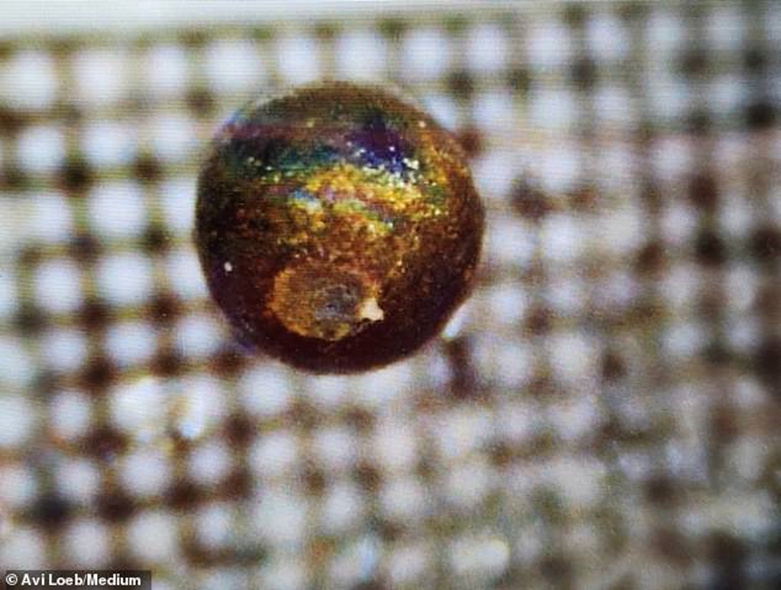Finding materials in the sea from outside the solar system

“It is a historic discovery because it is the first time that scientists have analyzed material from a massive body that arrived to Earth from outside the solar system.”
Astrophysicist Avi Loeb from Harvard University angers his colleagues who consider him undermining science
Scientists have found materials from outside our solar system for the first time, according to a controversial Harvard University professor.
The "balls" were found in the Pacific Ocean in June. But preliminary analysis showed that this material comes from outside our solar system after it was carried by an interstellar object that collided with Earth in 2014, according to theoretical astrophysicist Avi Loeb of Harvard University.
The material may have come from an "extraterrestrial technological source" due to some unusual properties of the material. Professor Loeb had previously claimed that the asteroid was perhaps artificial, similar to an alien spacecraft.
Professor Loeb wrote in his statement about the discovery: “It is a historic discovery because it is the first time that scientists have analyzed materials from a massive body that reached Earth from outside the solar system.”
Professor Loeb has made a number of claims about the possibility of the existence of extraterrestrial life as well as visitors from other solar systems. While he made many contributions to the science of astrophysics, he is perhaps most famous for his hypothesis that Oumuamua, the first interstellar object to visit our solar system, might be a "space probe."

His periodic and often unusual claims have drawn disapproval from some fellow scientists who view him as being driven by sensationalism and damaging to the normal process of exploration. They said his statements were intended to attract attention and undermine the regular work of science in verifying unusual claims with unusual evidence as well.
“People are tired of hearing Avi Loeb’s outlandish claims,” astrophysicist Steve Desch of Arizona State University told the New York Times in July when Professor Loeb revealed details of his research. “His claims distort good science – he confuses good science with We do it with this ridiculous excitement and desperate for attention.”
Professor Loeb launched his latest claim on Medium, documenting his journey to the Pacific Ocean to collect material. . In recent years, he has been preoccupied with a fireball that fell to the ground in 2014 and has been searching to find any falling fragments from it.
He claimed that the details about that ball of fire indicate that its source is outside our solar system. These allegations sparked controversy, although it was approved for publication in the prestigious Astrophysical Journal after it was initially rejected because scientists considered at the time that there was not enough concrete evidence to indicate that it actually came from outer space.

Despite this, over the past months Professor Loeb and his team have combed the Pacific Ocean for any remains of the object, and in June they announced that they had successfully collected some samples that have since been examined by scientists.
Now, Prof. Loeb says, analyzes show that the substances "It comes from an object about a meter in size that comes from outside our solar system." A number of details related to this material indicate that it comes from an interstellar source, he said.
He specifically referred to the amount of beryllium, lanthanum, and uranium (or what is known for short as BeLaU) in those objects. He said that this distinguishes it from other samples that were not found in the path of that object, as well as from objects that are usually expected to have formed on Earth, the Moon, or Mars.
Professor Loeb added that he is confident that more objects will be found similar to IM1, which is the name he gave to the object that he claimed to have interstellar origins (coming from outer space). He assumed the existence of “a few million bodies similar to this body that lie in the Earth’s orbit around the Sun.” "At any time," and that "some of them may represent alien technological remains from other civilizations."
He also criticized several scientists who expressed doubts about his claims, and quipped that he "avoids colleagues who hold decisive opinions without looking for evidence, and I flee from them towards greater information in interstellar space." He added that he wished his critics "happiness and prosperity."
Source: websites

